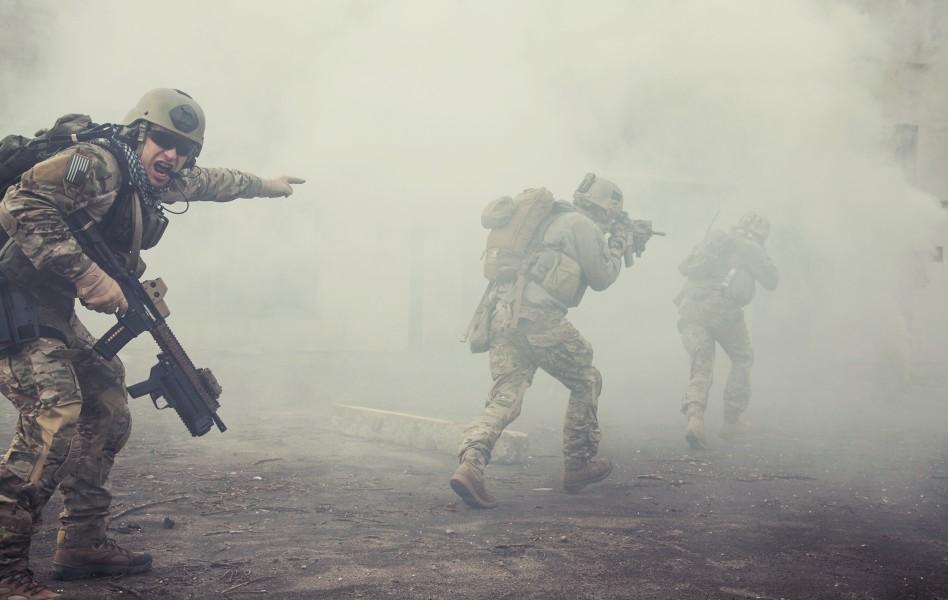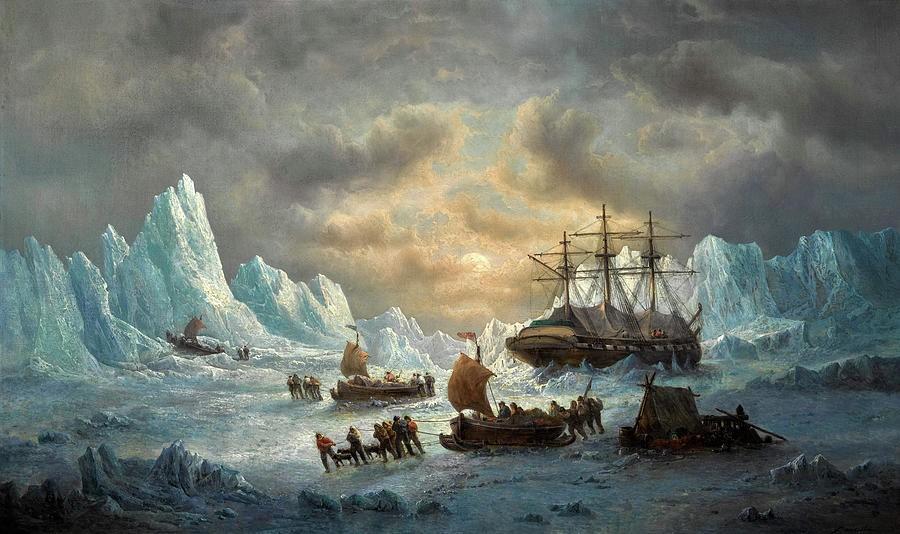“The history of mankind hasn’t yet seen the largest arsenal of nuclear weapons under control by bandits,” said Dmitry Medvedev, deputy head of Russia’s Security Council, broadcast across the nation, but clearly intended for foreign audiences. “Such a crisis will not be limited by just one country’s borders, the world will be put on the brink of destruction,” said the Putin puppet. US Secretary of State Blinken convened a call with foreign ministers from Canada, France, Germany, Italy, Japan, the UK, and the EU’s top diplomat. “We won't allow such a turn of events,” pledged Medvedev.
Overall: “Of all the passions that inspire a man in a battle, none, we have to admit, is so powerful and so constant as the longing for honor and renown,” wrote Carl von Clausewitz (1780-1831), Prussian General, military theorist, genius. His work is taught in military academies throughout the world. “It is even better to act quickly and err than to hesitate until the time of action is past,” wrote Clausewitz. “Never forget that no military leader has ever become great without audacity.” America’s generals have all read Clausewitz, internalized his teachings; the same can be said for our allies, adversaries too. Yevgeny Prigozhin may or may not have. A petty thief turned serial entrepreneur; the leader of Wagner Group lacks conventional training. “The Statesman who, knowing his instrument to be ready, and seeing War inevitable, hesitates to strike first is guilty of a crime against his country.” We may never know exactly what sparked the move by Prigozhin this weekend, but his claims that Putin attacked his mercenary troops provided a plausible pretext. “Theory must also take into account the human element; it must accord a place to courage, to boldness, even to rashness.” No sooner had the Wagner Group’s army started its race toward Moscow than the coup appeared to have ended. The mercenaries reversed course, and Prigozhin headed to Belarus for exile. “Many intelligence reports in war are contradictory; even more are false, and most are uncertain.” Military commanders across the world convened emergency meetings to consider the ramifications of a destabilized Russia, a breakdown, a coup in which one war criminal is replaced by another savage. “Be audacious and cunning in your plans, firm, and persevering in their execution, determined to find a glorious end.” We appear to be approaching a time where the Russia we have known for a couple decades takes an unexpected turn. “History had no lessons or rules to offer the student, it could only broaden his understanding and strengthen his critical judgment.”
Week-in-Review: Mon: US holiday – quiet markets, US sec of State Blinken meets with Xi – ‘very good progress made on US/China ties’, ECB’s Simkus and Kasimir suggest July hike but data dependent for Sept, US NAHB housing mkt index 55 (51e), S&P closed; Tue: RBA mins reveal dovish tilt as it shows a pause was considered in June, China cuts 1y/5y LPR by 10bp (15bp exp generally), Japan FinMin Suzuki says watching FX closely but concludes Yen level should be determined by the market, Hungary CB unch as exp (cuts 1d depo rate 100bp as exp), Hunter Biden pleads guilty to Federal tax and weapons charges, Germany PPI 1% (1.7%e), Mexico ret sales 3.8% (2.5%e), US housing starts 1.631m (1.4m exp) – 2nd greatest beat vs exp in 10y, US Philly fed mfg activity -16.6 (-16p), S&P -0.5%; Wed: Powell testifies to House / rates may move higher but at a more moderate pace / signals 2 more hikes ‘a pretty good guess’, UK CPI hotter than exp / CPI 8.7% (8.4%e) / Core CPI 7.1% (6.8%e) / RPI 11.3% (11.2%e), Czech CB unch as exp, Brazil CB unch as exp, UK gov’t debt above 100% of GDP – 1st time since 1961, Fed’s Bostic thinks hikes are finished, Biden refers to Xi as ‘dictator’ in off the cuff comments – risking positive momentum following Blinken visit, BOJ mins and comments from Adachi reiterate dovish stance, S. Korea PPI 0.6% (1.6%p), UK public sector borrowing 20b (19.5b exp), S. Africa CPI 6.3% (6.5%e) / Core CPI 5.2% as exp, UK house prices 3.5% (2.5%e), S&P -0.5%; Thu: BOE hikes 50bp (35bp priced) / 2 votes for no hikes / guidance unch (mildly hawkish), Norges bank hikes 50bp (only 25bp exp) / sees 50bp add’l hike to come, SNB hikes only 25bp as exp, Turkey CB hikes only 650bp to 15% – dovish (exp was for hike to 20-25%), Indonesia CB unch as exp, Philippine CB unch as exp, Mexico CB unch as exp, submersible carrying 5 people to view the Titantic deemed to have catastrophically imploded – ending a 4d search, France mfg confidence 101 (98e), Mexico Bi-Weekly CPI 5.18% (5.30%e) / Core CPI 6.91% (7.03%e), US Chicago Fed activity -0.15 (-0.10e), US init jobless claims 264k (259k exp), US leading index -0.7% (-0.8%e), EU cons conf -16.1 (-17e), US KC fed activity -12 (-5e), S&P +0.4%; Fri: EU PMI estimates disappoint – mfg 43.6 (44.8e) / serv 52.4 (54.5e) / comp 50.3 (52.5e), Yellen sees diminishing risk for US to fall into recession, Turkey wants Sweden to begin extraditing or expelling Kurdish separatists before next month’s NATO summit, Biden/Modi announce defense and Chips deals at WH, Argentina 1Q GDP 1.3% (1.5%e), UK cons conf -24 (-26e), Japan CPI 3.2% as exp / Core CPI 4.3% (4.2%e), UK core ret sales -1.7% (-2%e), US mfg PMI 46.3 (48.5e) / serv 54.1 (54e) / comp 53 (53.5e), S&P -0.8%; Sat: Attempted coup in Russia appears to have been thwarted (Prigozhin exiled to Belarus).
Weekly Close: S&P 500 -1.4% and VIX -0.10 at +13.44. Nikkei -2.7%, Shanghai -2.3%, Euro Stoxx -2.9%, Bovespa +0.2%, MSCI World -1.1%, and MSCI Emerging -2.8%. USD rose +6.8% vs Turkey, +3.1% vs South Africa, +2.9% vs Australia, +1.5% vs Chile, +1.3% vs Yen, +0.8% vs Sterling, +0.7% vs China, +0.5% vs Mexico, +0.5% vs Sweden, +0.4% vs Indonesia, +0.4% vs Euro, and +0.1% vs India. USD fell -15.6% vs Bitcoin, -11.5% vs Ethereum, -0.8% vs Brazil, -0.1% vs Canada, and -0.1% vs Russia. Gold -2.1%, Silver -7.4%, Oil -3.9%, Copper -2.1%, Iron Ore -0.7%, Corn -1.6%. 10yr Inflation Breakevens (EU +1bp at 2.32%, US -2bps at 2.21%, JP +3bps at 0.99%, and UK -4bps at 3.77%). 2yr Notes +3bps at 4.74% and 10yr Notes -3bps at 3.74%.
Year-to-Date Equities (high to low): Argentina +45.8% priced in US dollars (+108.2% priced in pesos), Greece +38.7% priced in dollars (+36.5% priced in euros), NASDAQ +28.9% in dollars, Hungary +26% (+15.1%), Mexico +24.9% (+10.1%), Poland +23.6% (+15.3%), Ireland +21.2% (+19.2%), Taiwan +20.8% (+21.7%), Brazil +19.9% (+8.4%), Italy +16.7% (+14.8%), Germany +15.5% (+13.7%), Euro Stoxx 50 +14.4% (+12.6%), Spain +14.4% (+12.6%), Japan +14.4% (+25.6%), Chile +13.3% (+7.9%), S&P 500 +13.3%, MSCI World +12.6% in dollars, Czech Republic +12.6% (+8.4%), Russia +12.5% (+29.8%), France +12.5% (+10.7%), Netherlands +11.6% (+9.8%), Denmark +11.3% (+9.6%), Korea +10.8% (+14.9%), Saudi Arabia +9.6% (+9.4%), Switzerland +7.4% (+4.6%), Sweden +6.5% (+9.4%), UK +5.1% (+0.1%), Portugal +4.5% (+2.8%), India +4% (+3.1%), Russell +3.4%, Canada +2.7% (+0.2%), Colombia +1.8% (-11.9%), Venezuela +1.1% (+62.7%), Indonesia +0% (-3.1%), China -0.5% (+3.5%), Austria -0.6% (-2.2%), New Zealand -1.1% (+2.3%), Australia -1.2% (+0.9%), Philippines -2.8% (-2.6%), Singapore -2.9% (-1.8%), Belgium -3.2% (-4.8%), Israel -3.3% (-0.3%), HK -4.9% (-4.5%), South Africa -6.3% (+3.2%), UAE -6.4% (-6.4%), Finland -6.9% (-9%), Norway -10.3% (-0.7%), Thailand -11.3% (-9.8%), Malaysia -12.4% (-7%), Turkey -24.9% (+1.3%).
Aglow: “Before the 2008 financial crisis we looked at the Taylor Rule as an indicator of where Fed Funds would be,” said Lindsay Politi, One River’s inflation portfolio manager. “It’s not a complicated formula, it calculates the appropriate policy rate based on how far away inflation and unemployment rates are from target,” she said, our Bloomberg’s aglow. “The problem, of course, came in 2009 when the Taylor Rule said Fed Funds should have been around -5%. Knowing that was unachievable, all the alternative monetary policy tools were developed.”
Aglow II: “If the post-QE world looks more like pre-2008, there may be value in looking at those models again,” continued Lindsay, the two of us exploring alternative ways of looking at markets. “The Taylor Rule says Fed Funds should be 9.25%. EU rates should be 11.25% vs 4% today, UK rates should be 14% vs 5%.” Japanese rates should be 6% vs 0% today. “Today’s WSJ wondered where the promised recession is? Maybe it hasn’t materialized because traditional metrics for policy rates would say that rates aren’t close to high enough yet for a recession.”
Aglow III: “They’re not any higher with good reason. Policy rates aren’t high enough to slow main street, but they’ve done a number on Wall Street,” said Lindsay. “Years of QE has created distortions across the financial sector that can’t be quickly unwound.” But in some ways the alternative makes more sense. “The failure of QE was always that its stimulus never made its way into the general economy - it only served to inflate financial assets. Why shouldn’t its removal deflate financial assets with limited impact to the broader economy?”
Aglow IV: “There are many very negative growth indicators that everyone keeps talking about,” she said. “What I’ve found more interesting are the surprising signs of strength in rate sensitive sectors.” If higher interest rates were slowing the economy, you’d expect to see it in areas where people need to borrow - cars, homes, small business spending. “Auto sales, mortgage applications for new home purchases, housing starts, and capital expenditure expectations are improving,” said Lindsay. “Interest rates may not be as restrictive as previously thought.”
Aglow V: “If rates continue higher, we’ll hit a point where they crush the economy,” I retorted. “But until we hit that point, the thing that would surprise investors most would be higher rates lifting government interest payments on debt that are then funded by rising deficits.” The CBO forecasts a 5.3% deficit in 2023 ($1.4trln), and 6.1% in 2024 and 2025. “There is this expectation that higher rates slow inflation. We should be on the lookout for signs that higher rates spur a flood of cash into the economy that sustain inflation in ways that few people can imagine.”
Anecdote: “Important developments are rapidly unfolding in digital asset markets,” I said at Coinbase’s State of Crypto Summit in NYC, The Times Center packed, buzzing. “Following the SEC lawsuit that led sentiment to hit another a moment of extreme pessimism, good things are happening.” That’s how markets work. Digital asset prices bottomed out in November when FTX collapsed, then jumped 100%. Prices fell 20% into the SEC lawsuit, they’re now back at recent highs. “Blackrock submitted a Bitcoin ETF application. It named Coinbase as the custody partner and brought in the NASDAQ exchange to fill a market surveillance-sharing agreement function.” The combination of sophisticated, trusted and highly regulated market participants clears the way for probable approval, possibly by year-end. “Citadel, Fidelity, Schwab, Virtu, and Sequoia announced the creation of EDX.” It’s a US digital asset exchange for Bitcoin, Ethereum, Litecoin, Bitcoin Cash. “Ken doesn’t waste time and money doing stupid things that might antagonize the SEC.” Nor does he start businesses that won’t move Citadel’s needle. “And Michael Hsu, OCC Chief, just said that tokenization is the future, but it’ll happen on centralized blockchains.” All sorts of unheralded asset tokenization initiatives are underway; we’re leading some ourselves. “Lack of US regulatory clarity not only held back crypto innovation, but also created the time and space for powerful TradFi incumbents to develop their blockchain strategies.” The incumbents, onshore and offshore, are now moving in earnest. “It might not be the path that digital innovators wanted to see unfold, but the key insight is that the incumbents are signaling that the future of financial infrastructure will be built on blockchains.” The race is now on. “The bad actors in the industry have been expunged. The survivors have the technology, the highly specialized knowledge, and the know-how that will be vital to build this new foundation of finance,” I said. “The crypto asset class is $1trln today. But there is something like $500trln of global wealth. Someday, most, perhaps all of this, will be recorded, traded, and custodied using blockchains.”
Good luck out there,
Eric Peters
Chief Investment Officer
One River Asset Management
Disclaimer: All characters and events contained herein are entirely fictional. Even those things that appear based on real people and actual events are products of the author’s imagination. Any similarity is merely coincidental. The numbers are unreliable. The statistics too. Consequently, this message does not contain any investment recommendation, advice, or solicitation of any sort for any product, fund or service. The views expressed are strictly those of the author, even if often times they are not actually views held by the author, or directly contradict those views genuinely held by the author. And the views may certainly differ from those of any firm or person that the author may advise, converse with, or otherwise be associated with. Lastly, any inappropriate language, innuendo or dark humor contained herein is not specifically intended to offend the reader. And besides, nothing could possibly be more offensive than the real-life actions of the inept policy makers, corrupt elected leaders and short, paranoid dictators who infest our little planet. Yet we suffer their indignities every day. Oh yeah, past performance is not indicative of future returns.





